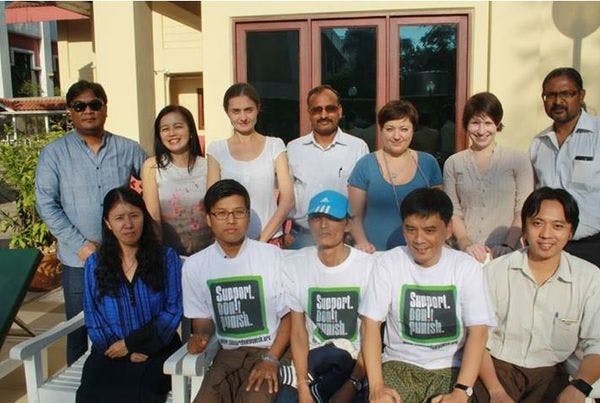Launching CAHR programme in Myanmar
Myanmar, one of the largest producers of opium is a part of Golden Triangle together with Thailand and Lao People’s Democratic Republic which produces 70% of world opium.
Because of strict implementation of opium bans, challenging life for local people and constant conflicts in the bordering areas with China and India cultivation of opium is increasing in Myanmar. Traditional places for opium growing shifted. Nowadays poppy cultivation is increasing in northern Shan State and Kachin State and Northeast India. Together with heroin consumption, amphetamine-type stimulant (ATS) consumption is also on the rise.
Conflict affected areas in Myanmar and Northeast India are places where opium cultivation is very common. As life of people from local communities becomes more and more difficult, cultivating opium can serve as a mean to survive in these areas. The ongoing conflicts also make it difficult to organize treatment and harm reduction services and it becomes problematic for PWID to access them.
Precursors for heroin and ATS are not produced in Myanmar, they are often brought from neighboring China and India which create close linkages between three countries and people involved in drug production, dealing and consumption.
It is estimated there are 75,000 people who inject drugs in Myanmar thought there is no precise data on the number of people who inject drugs (PWID) in the country. HIV prevalence among PWID is reaching 18.7% and HCV 79.2%.
National policy documents support harm reduction programme, needle and syringe exchange programme and opioid substitution therapy are operational in Myanmar. But as it is quite challenging to work in cross border areas where conflicts often occur, this will be a priority for harm reduction efforts supported by CAHR programme in Myanmar in 2015. As there are partner organisations in China (AIDS Care China) and India (India HIV/AIDS Alliance) this creates a unique opportunity of linking and strengthening harm reduction services in the bordering areas of three countries and sharing experience and knowledge between three countries.
Click here to read the full article.
Keep up-to-date with drug policy developments by subscribing to the IDPC Monthly Alert.
Topics
Regions
Related Profiles
- Community Action on Harm Reduction (CAHR)
